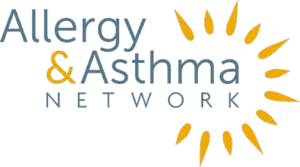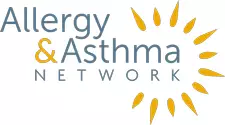
Birch trees are trees with beige, silvery or white bark that is often flaky. They are part of the order Fagales and the family Betulaceae of trees. In this order,birch(followed by alder and hazel) is the most problematic tree allergen.
Birch pollen allergyis one of the most common seasonal allergies. Between 8-16% of people are sensitized to the allergen.
There are seven types of birch pollen allergens, but the main one is called Bet v 1 specific IgE. High levels of IgE to Bet v 1 is more commonly associated withoral allergy syndrome.
When Is birch pollen allergy season?
Pollen seasons vary by type of pollen (tree pollenvs. grass pollen, for example). They also vary by regions. Birch tree allergy will also vary by where you live. The typical birch pollen allergy season in your area is when trees produce the most pollen. This is most often between the months of January and April. The cooler the climate, the later the birch pollen season.
How long do birch trees release pollen?
Birch trees release pollen during the early spring months. It fades in late spring when grass pollens tends to emerge.
Birch tree pollen is thin and powdery. When maturing, it is green. It turns yellow or brown when fully mature. Birch trees produce about5 billion pollen every year.Due the texture of the pollen it is easily carried and released by the wind. They typically release the pollen during the early spring months.
Does tree pollen get worse at night?
桦树花粉计数通常是最高的n the morning. But as you go throughout your day, the pollen may collect on your clothes, skin and hair. You then breathe it in as you go about your day or when you sleep at night.
It’s recommended that people who are allergic to birch remove their clothes and shower after being outside for a while. It’s best to shower before bed. Then sleep with your window closed to make sure that early morning pollen does not enter your bedroom.
How far can birch pollen travel?
Birch pollen is very light and powdery. It can be picked up by the wind and carried for miles. Even if you don’t have any birch trees near you, you may still be exposed to birch pollens.

Where are birch trees found?
Birch trees grow throughout the United States. There are dozens ofspecies of birch treesthat grow throughout country and can cause allergies. The two most common are the European white birch (Betula pendula) and River birch (Betula nigra).
What are typical birch tree pollen allergy symptoms?
Birch pollen allergies are not different from other commonpollen allergy symptoms. These may include:
- Sneezing, coughing, nasal congestion, itchy or runny nose – symptoms of allergic rhinitis (“hay fever”)
- Itchy or watery eyes, eye swelling – symptoms of allergic conjunctivitis
- Headache
- Fatigue
People diagnosed with asthma and birch pollen allergy may also experience coughing, wheezing, difficulty breathing and chest tightness.
In some cases, people who are allergic to birch pollen may experience oral allergy syndrome (OAS, also called pollen-food allergy syndrome). With OAS, symptoms develop after eating a fruit or vegetable that is botanically related to birch trees.
Symptoms of OAS may include:
- Tingly or itchy mouth
- Hives on the mouth
- Scratchy or sore throat
- Swelling of the lips, mouth, tongue or throat
How do you test for birch pollen allergy?
See a board-certified allergist for testing. The allergist will apply a small amount of diluted allergen (in this case, birch pollen) to the skin and wait 15 minutes to see if a raised, itchy bump appears. If you develop the raised, itchy bump, then you have an allergy to that particular pollen.
Your doctor can also order a blood test to diagnose a birch pollen allergy as well as other allergens.
What foods trigger birch pollen allergy?
食物不触发桦树花粉过敏。但certain foods contain similar proteins to those found in birch pollen. When you eat these foods, such as eating apples, it confuses the immune system, causing oral allergy syndrome or pollen-food allergy syndrome.
Certain raw fruits, nuts and raw vegetables can cross react with birch pollen andtrigger OAS symptomsin people with a birch pollen allergy. These foods may include:
| FOODS THAT MAY TRIGGER OAS | |
|---|---|
 |
Almonds |
 |
Apple |
 |
Apricot |
 |
Celery |
 |
Hazelnut |
 |
Carrot |
 |
Cherries |
 |
Kiwi |
 |
Plum |
 |
Peach |
 |
Parsley |
 |
Pear |
 |
Soybeans |
If you are eating fresh fruit and suddenly your mouth and throat feel itchy or tingly, you may have OAS. It’s important to remember these symptoms are not related to food allergies. Rather, your immune system thinks the birch pollen is invading and creating a response.
Some people with oral allergy syndrome are only bothered during birch pollen season. The rest of the year they can eat birch pollen-related foods with no problem. Oral allergy syndrome symptoms usually only occur in raw fruits and vegetables, not the cooked fruits and vegetables.
What foods should you avoid if you have birch pollen allergies?
There is no specific food to avoid eating if you have a birch pollen allergy. Instead, listen to your body. Avoid the food that is causing your symptoms, especially during pollen season. Once pollen season is over, you can try the fresh variety again.
You can also try cooking the food that causes symptoms. The cooked form of the food breaks down the allergic protein. This way you are able to tolerate it. You may also find that trying a different variety of the same fruit does not cause symptoms.
How do you treat birch pollen allergy?
Initialtreatment for birch pollen allergystarts with over-the-counter and prescription allergy medications. These may include antihistamines, decongestants and corticosteroid nasal sprays, which can help relieve symptoms.
Start taking your allergy medication about 1-2 weeks before birch pollen season begins. For example, if you know your birch pollen allergy arrives in mid-March, start taking your anti-inflammatory nasal sprays in early March.
- Antihistaminesdo exactly as the name suggests: reduce histamine created by exposure to pollen grains. Most are available over the counter.
- Nasal decongestantsalso do exactly as they suggest: reduce congestion in the nose. They are for short-term use only. They should not be used for more than 3-5 days or congestion might worsen.
- Corticosteroid nasal sprayswork by reducing inflammation in the nasal passages. They should be used regularly during allergy season, rather than as needed.
When you know you’re going to be outside for an extended period of time and exposed to birch pollen allergens, it may be helpful to pre-medicate first. Use an antihistamine or corticosteroid nasal spray two hours prior to going outside. For eye allergies, use eye drops as needed.
If these medications are not helping, talk with your allergist about other treatment options. Leukotriene modifiers, mast cell stabilizers and anticholinergic medications can help treat more persistent allergy symptoms.
Another treatment option: allergy shots, also calledallergen immunotherapy. This involves regularly injecting a tiny amount of birch pollen allergen into the body, gradually increasing the dosage over time. The goal is to desensitize the immune system to the birch pollen allergen. This can help reduce or even eliminate allergic symptoms.
Sublingual immunotherapy is available as an alternative treatment to allergy shots. This involvestaking an allergy tablet(or pill) that dissolves under the tongue. Research has found sublingual immunotherapy is highly effective in reducing symptoms from an allergic reaction.

How to prevent birch pollen allergy symptoms
During tree pollen season, it can be very difficult to avoid allergies. So prevention is an important part of an allergy management plan. Here are some strategies.
- Check the daily pollen count on TV, in the newspaper or online. Pollen counts aren’t perfect as they often represent collections made 24-48 hours earlier. But they should give you a general idea of when the pollen count is at its highest.
- During birch tree pollen season, keep your home and car windows closed and run your air conditioner.
- Avoid wooded areas, especially from March to May when birch tree pollens are more abundant.
- 如果你花了时间在外面,改变你的衣服s when coming indoors. Take a shower to get the pollen out of your hair and off your body.
- Use sterile saline eye drops and/or nasal sprays to flush out pollen from your eyes and nose.
- Try nasal rinses and washes. A solution of saltwater (sodium chloride) and baking soda (sodium bicarbonate) is placed in a rinsing device to wash out the nasal passages. It can help shrink swollen membranes, improve airflow, and open sinus passages. You can buy a premixed solution packet at pharmacies or make your own.
- Consider wearing a face mask when birch pollen is at its worst. This can help filter pollen and keep it from reaching your nose. If eye allergies are a problem, consider wearing sunglasses outside.
Reviewed by:
Ruthie Marker, MSRC, RRT, RRT-NPS, AE-C, LSSYBis a respiratory therapist with more than 13 years of experience working in adult critical care, neonatal care, and patient education. She joined Allergy & Asthma Network to support the Not One More Life coaching program as a Spanish-speaking Asthma Coach. Ruthie has worked as a respiratory therapist in Texas all of her career and has supported COVID-19 efforts in Maryland and Arkansas.


 810304 Eaton Place, Suite 100
810304 Eaton Place, Suite 100